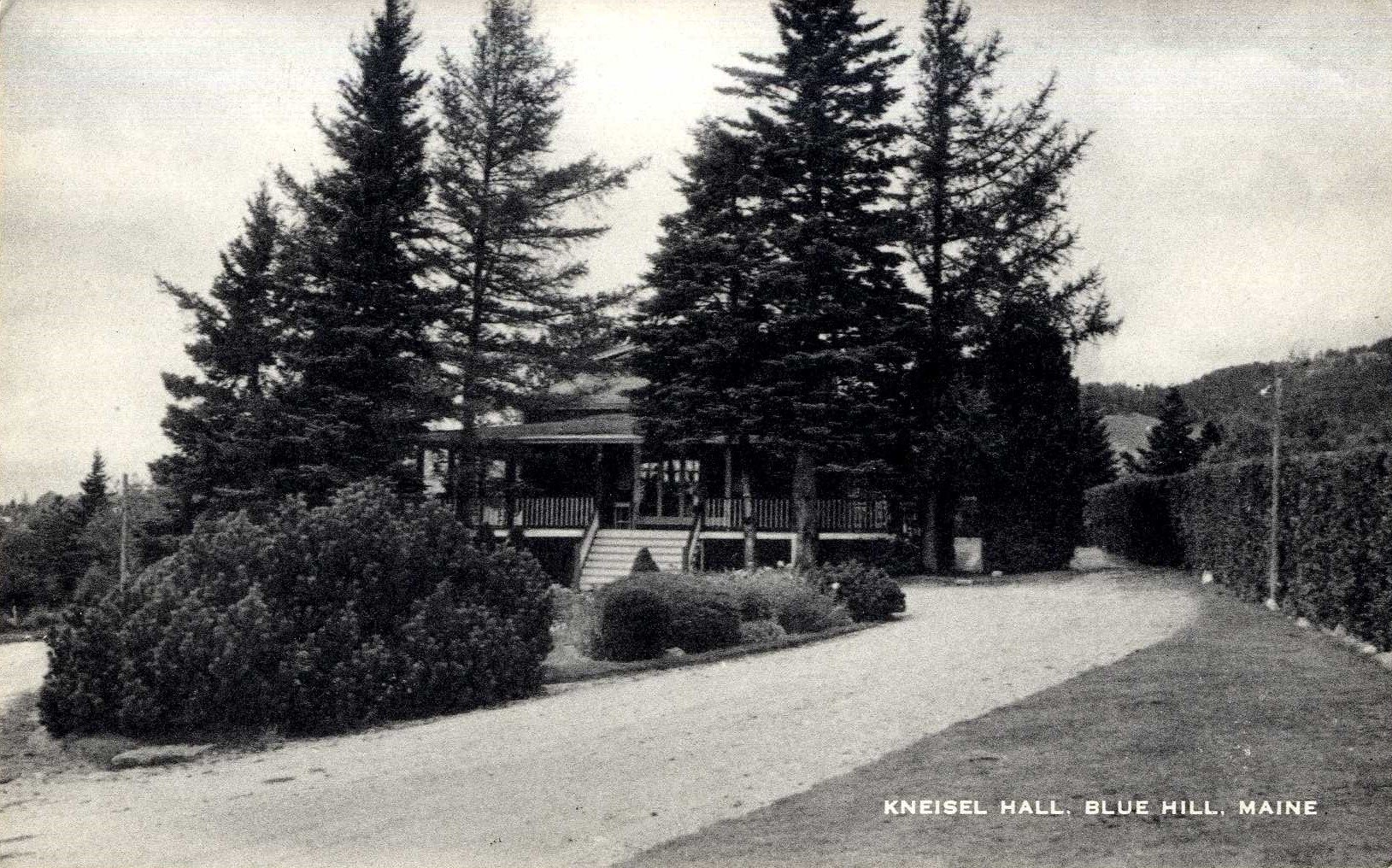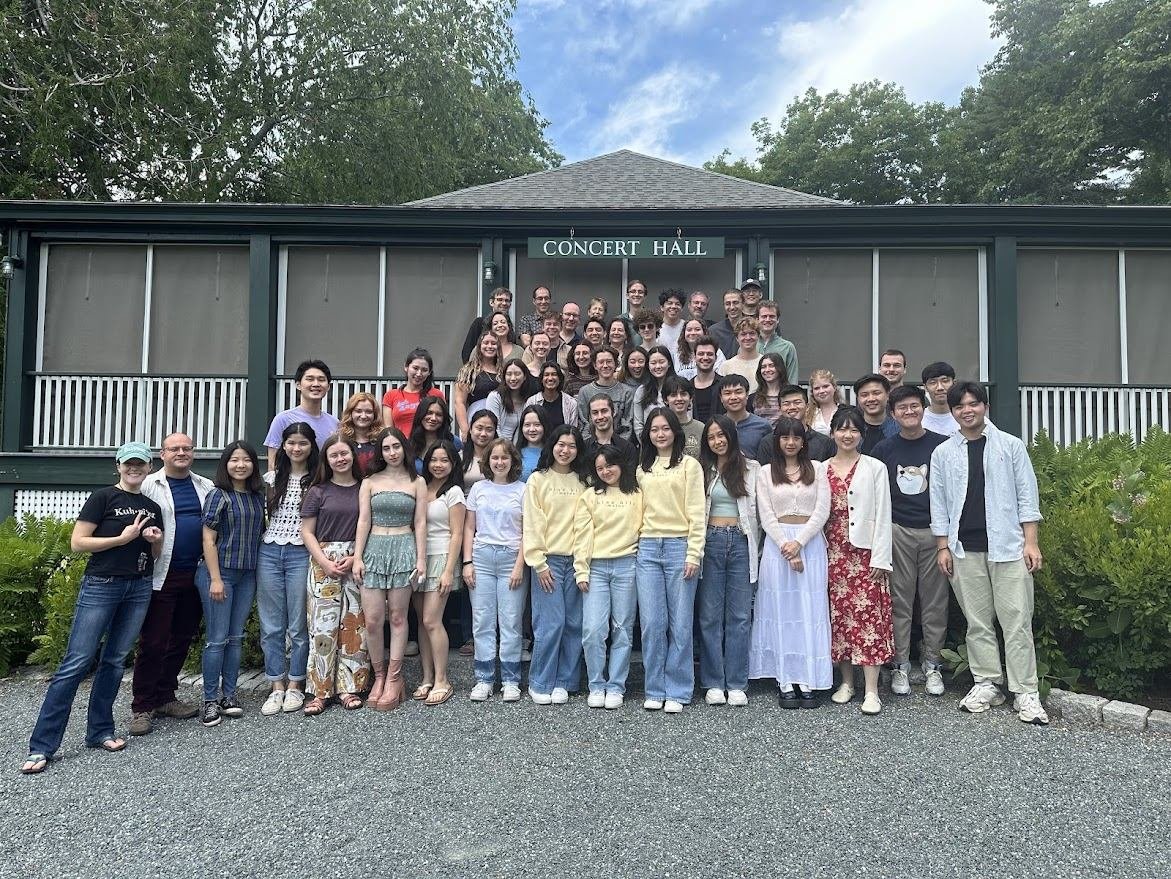












Story
Kneisel [kuh-NI-zul] Hall was founded in Blue Hill by world-renowned violinist, Franz Kneisel who was born in Bucharest, studied at the Vienna Conservatory, and emigrated from Berlin in 1885. By the time he arrived in Blue Hill at the turn of the century, the small town had attracted a handful of prominent summering musicians who formed the core of a budding music community. Visiting from New York, Kneisel started the summer music school in his home, offering students time for individual practice and lessons, chamber music rehearsals, and evening performances.
By 1922, the school outgrew the house. Felix Kahn, a friend and amateur cellist, constructed a large hall on the side of Blue Hill Mountain, a building with a resonant wood interior that has been the center of the school’s activities ever since. The concert hall is an unconditioned, vernacular structure of little more than 1,100 square feet. The building has a covered front porch and side corridors all built of light wood-frame construction, wood exterior siding, and interior wood paneling. The north end is anchored by a beautiful fieldstone fireplace and chimney.
Now celebrating its 122nd year, Kneisel Hall is an internationally recognized chamber music school and festival, educating more than 80 music students and presenting over 50 public performances through the summer months. Its storied past has earned its reputation as the cradle of chamber music teaching in America, a legacy the organization hopes to enshrine through a nomination to the National Register of Historic Places.
Threat
Unfortunately, the seasonal use of the building and deferred maintenance has contributed to slow deterioration of the structure. A 2023 assessment by Stahnke + Kitagawa Architects documented that the wood post foundation is susceptible to freeze thaw cycles and the chimney needs to be carefully disassembled and rebuilt after having settled into the ground considerably. Water infiltration along the roof and dormers has also led to damage to the wood paneling lining the main performance space.
As the Board of Trustees and staff explore their options, they have expressed a strong interest in preserving the building. Of utmost importance is the hall’s acoustics for live performances resulting from the volume and layout of the space, historic surface materials, and the window and door openings that carried sound to audience members on the wraparound porch. They intend to take a considered approach by retaining as much historic fabric as possible, while using new appropriate materials and sensitively integrating modern amenities. As the summers get hotter, this includes exploration of more efficient air conditioning to increase comfort for audience members and protect priceless antique instruments used by performers.
Kneisel Hall is a nonprofit organization whose attention is directed at developing world class artists and sharing the chamber music tradition with audiences, not comprehensive preservation projects. Repairing and reimaging Kneisel Hall will be an expensive endeavor that will need to be executed around an intensive summer programming and performance schedule.
How to get involved
Maine voters can “Vote Yes on 3” to create a funding source for the preservation of historic community buildings like Kneisel Hall. The third referendum question on this November’s ballot asks Mainers to support a $10 million bond that would create a state grant program administered by the Maine Historic Preservation Commission to fund repairs on National-Register listed buildings owned and stewarded by nonprofit organizations or local governments.
To learn more about Kneisel Hall and how to help this center of chamber music teaching and performance excellence, please visit www.kneisel.org. Keep an eye out for the announcement of their 2025 programs; enjoy a show and support preservation!
Photo Credits: Kneisel Hall; Maine Memory Network


